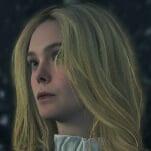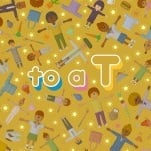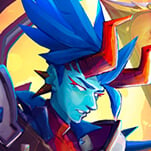The Night of the Rabbit (PC/Mac)

Meet Jerry Hazelnut. He’s your average 12-year-old boy living in a cottage in the woods with his mother, until he becomes a magician’s apprentice after literally pulling a rabbit out of a top hat. He is then transported to a little town called Mousewood where he learns spells, talks to mice and squirrels, and explores the familiar yet strange world that he suddenly finds himself in.
You wouldn’t be far off if you thought this sounded like a generic, old-school fairy, although The Night of the Rabbit—the new point-and-click adventure game by Daedalic Entertainment—contains much more under the surface than a mystical and innocent quest. It’s a game that pays homage to the genre by introducing a new generation to its charm and whimsy, complete with challenging puzzles, complex characters and beautifully-painted scenery.
It harkens back to the point-and-click PC games of the 1990s. While modern games often rely on quick-time events and cut scenes to move the plot forward, The Night of the Rabbit relies on the player using strategy and trial and error to single-click items, combine them and put them back into the environment. The difficulty comes from seeing how the items you pick up interact with each other, and what their ultimate purpose is. It ranges from the basic coffee in a cup that you feed to the hungover party guest, to the coin on a string that you use to trick a vending machine to spout a blue drink that you then feed to a sick dwarf who then gets you more of said blue drink which then—wait, my head hurts, all of a sudden.
People who grew up playing these games will adapt to this style easily, while amateurs will find it more frustrating. The game provides a tutorial section in the beginning that slowly brings you through basic controls and strategies. The first level is fairly straight forward, light-hearted and fun, but the difficulty curve spikes when you realize the next level contains too many items to keep track of, muddling together the quests that continually accrue. It’s also very easy to miss important pieces of the puzzle since there are a lot of possibilities. While you can use a magic coin to highlight the clickable areas, I found myself using the coin more often than I would have liked; I felt like I was relying too much on hints rather than my own intuition. Instead of making me enjoy the game more, it took me out of the experience of just playing the game. Some people might be able to push through this frustration, but others will give up early.
This is less of a fault of Daedalic and more of the genre in general, which always prided itself on puzzles that didn’t work by normal logic, instead using a guessing game as a tool to get the player used to the process. However, what the studio does seem to have is a problem of heart. There is just too much content here. The amount of clickable objects, countless combinations and bonus side quests is overwhelming and you’re definitely going to skip a few. For example, there’s a card game called “Quartets” that you can play with the Mousewood residents for no purpose to the plot. It’s essentially Goldfish and your prize is just more cards to build out your deck. It’s a fine diversion and some players will truly enjoy it, but it’s mostly superfluous and distracting.
-

-

-

-

-

-

-

-

-

-

-

-

-

-

-

-

-

-

-

-

-

-

-

-

-

-

-

-

-

-

-

-

-

-

-

-

-

-

-

-









































